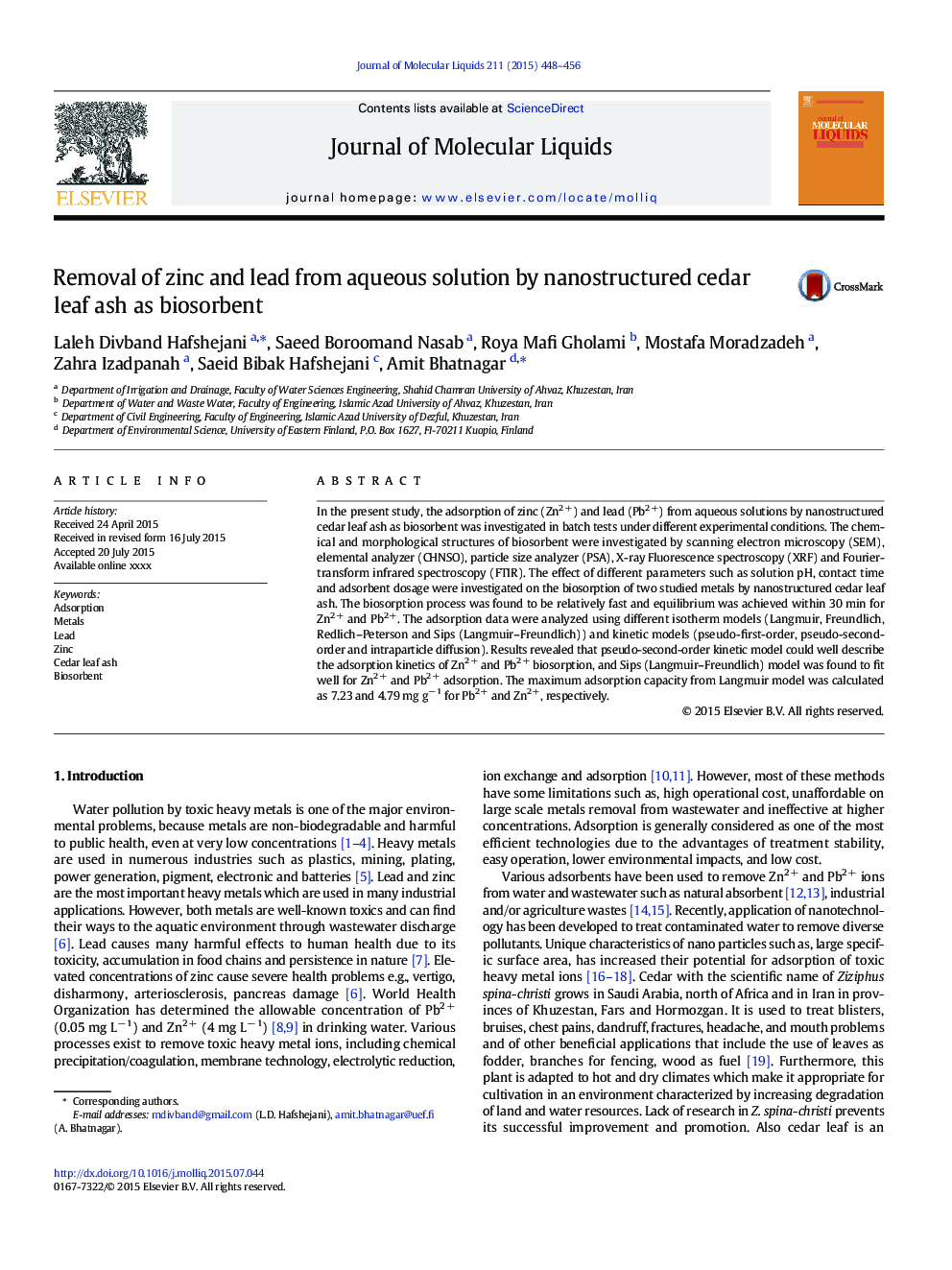| Article ID | Journal | Published Year | Pages | File Type |
|---|---|---|---|---|
| 5410658 | Journal of Molecular Liquids | 2015 | 9 Pages |
Abstract
In the present study, the adsorption of zinc (Zn2 +) and lead (Pb2 +) from aqueous solutions by nanostructured cedar leaf ash as biosorbent was investigated in batch tests under different experimental conditions. The chemical and morphological structures of biosorbent were investigated by scanning electron microscopy (SEM), elemental analyzer (CHNSO), particle size analyzer (PSA), X-ray Fluorescence spectroscopy (XRF) and Fourier-transform infrared spectroscopy (FTIR). The effect of different parameters such as solution pH, contact time and adsorbent dosage were investigated on the biosorption of two studied metals by nanostructured cedar leaf ash. The biosorption process was found to be relatively fast and equilibrium was achieved within 30 min for Zn2 + and Pb2 +. The adsorption data were analyzed using different isotherm models (Langmuir, Freundlich, Redlich-Peterson and Sips (Langmuir-Freundlich)) and kinetic models (pseudo-first-order, pseudo-second-order and intraparticle diffusion). Results revealed that pseudo-second-order kinetic model could well describe the adsorption kinetics of Zn2 + and Pb2 + biosorption, and Sips (Langmuir-Freundlich) model was found to fit well for Zn2 + and Pb2 + adsorption. The maximum adsorption capacity from Langmuir model was calculated as 7.23 and 4.79 mg gâ 1 for Pb2 + and Zn2 +, respectively.
Keywords
Related Topics
Physical Sciences and Engineering
Chemistry
Physical and Theoretical Chemistry
Authors
Laleh Divband Hafshejani, Saeed Boroomand Nasab, Roya Mafi Gholami, Mostafa Moradzadeh, Zahra Izadpanah, Saeid Bibak Hafshejani, Amit Bhatnagar,
